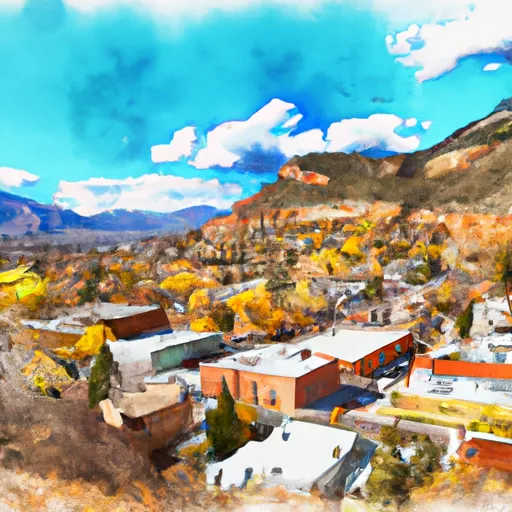-
 Snoflo Premium
Snoflo Premium
Get unlimited access to all our content
With no Ad interruptions! - Start Your Free Trial Login with existing account
Glenwood-Springs
Eden Index
Climate
8.4
•
Recreation
6.0
•
Community
3.8
•
Safeguard
6.4/10

Glenwood Springs, located in western Colorado, has a semi-arid climate with hot summers and cold winters. The area receives an average of 12 inches of precipitation annually, mainly in the form of snow during the winter. The hydrology constituents of Glenwood Springs include the Colorado River, Roaring Fork River, and many hot springs. The most famous is the Glenwood Hot Springs, which attracts visitors from all over the world. Glenwood Springs offers a variety of outdoor recreation opportunities, including hiking, biking, skiing, and rafting. Some of the popular destinations for outdoor recreation include Hanging Lake, Sunlight Mountain Resort, and Iron Mountain Hot Springs.
What is the Eden Index?
The Snoflo Eden Index serves as a comprehensive rating system for regions, evaluating their desirability through a holistic assessment of climate health, outdoor recreation opportunities, and natural disaster risk, acknowledging the profound impact of these factors on livability and well-being.
Climate Health Indicator (CHI): 8.4
Glenwood-Springs receives approximately
484mm of rain per year,
with humidity levels near 58%
and air temperatures averaging around
8°C.
Glenwood-Springs has a plant hardyness factor of
6, meaning
plants and agriculture in this region thrive during a short period during spring and early summer. Most
plants will die off during the colder winter months.
By considering the ideal temperature range, reliable water supplies, clean air, and stable seasonal rain or snowpacks, the Climate Health Indicator (CHI) underscores the significance of a healthy climate as the foundation for quality living.
A healthy climate is paramount for ensuring a high quality of life and livability in a region, fostering both physical well-being and environmental harmony. This can be characterized by ideal temperatures, reliable access to water supplies, clean air, and consistent seasonal rain or snowpacks.
Weather Forecast
Streamflow Conditions
Colorado Headwaters
Area Rivers
Colorado Headwaters
Snowpack Depths
Colorado Headwaters
Reservoir Storage Capacity
Colorado Headwaters
Groundwater Levels
Recreational Opportunity Index (ROI): 6.0
The Recreational Opportunity Index (ROI) recognizes the value of outdoor recreational options, such as parks, hiking trails, camping sites, and fishing spots, while acknowledging that climate plays a pivotal role in ensuring the comfort and consistency of these experiences.
Access to outdoor recreational opportunities, encompassing activities such as parks, hiking, camping, and fishing, is crucial for overall well-being, and the climate plays a pivotal role in enabling and enhancing these experiences, ensuring that individuals can engage in nature-based activities comfortably and consistently.
Camping Areas
| Campground | Campsites | Reservations | Toilets | Showers | Elevation |
|---|---|---|---|---|---|
| Avalanche | 13 | 7,320 ft | |||
| Bogan Flats | 36 | 7,609 ft | |||
| McClure | 8 | 8,187 ft | |||
| Lost Lake | 19 | 9,621 ft | |||
| Redstone | 17 | 7,299 ft | |||
| Coffee Pot Spring | 10 | 10,084 ft | |||
| Erickson Springs | 18 | 6,830 ft | |||
| Lake Irwin | 32 | 10,400 ft | |||
| Sweetwater Lake | 9 | 7,739 ft | |||
| Paonia State Park | 13 | 6,467 ft |
Nearby Ski Areas
Catastrophe Safeguard Index (CSI):
The Catastrophe Safeguard Index (CSI) recognizes that natural disaster risk, encompassing floods, fires, hurricanes, and tornadoes, can drastically affect safety and the overall appeal of an area.
The level of natural disaster risk in a region significantly affects safety and the overall livability, with climate change amplifying these risks by potentially increasing the frequency and intensity of events like floods, fires, hurricanes, and tornadoes, thereby posing substantial challenges to community resilience and well-being.
Community Resilience Indicator (CRI): 3.8
The Community Resilience Indicator (CRI) recognizes that education, healthcare, and socioeconomics are crucial to the well-being of a region. The CRI acknowledges the profound impact of these elements on residents' overall quality of life. By evaluating educational resources, healthcare accessibility, and economic inclusivity, the index captures the essential aspects that contribute to a thriving community, fostering resident satisfaction, equity, and social cohesion.

